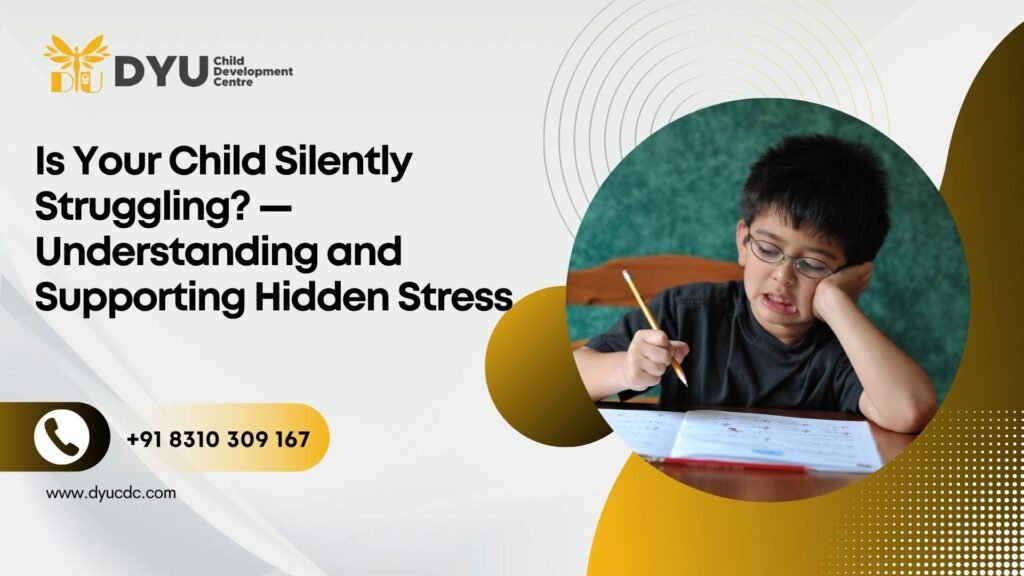May your child be bright, confident, and thriving—but more often than we think, many youngsters grapple with hidden stress. In his enlightening talk, Dr. Prashanth Gowda explores how to recognize silent distress in children, why it’s so common today, and what parents and caregivers can do to help.

1. Signs of Silent Struggle
- Mood shifts: Kids may become quieter, more irritable, or emotionally withdrawn—often without explaining why.
- Physical signs: Frequent headaches, stomach aches, fatigue, or changes in appetite can signal stress.
- Sleep disruptions: Troubled sleep—nightmares, waking at odd hours, refusing bedtime—may be a symptom of mental strain.
- Avoidance behaviors: Sudden reluctance toward activities they previously enjoyed, or excuses to skip school or playdates.
2. Common Stress Triggers
- Academic Pressure: Intense competition, frequent tests, and high expectations.
- Digital Overload: Comparison on social media, cyberbullying, and constant connectivity can enhance stress.
- Family Dynamics: Conflict, divorce, financial worries, or even over-scheduling can destabilize a child’s emotional security.
3. Why They Don’t Talk
- Fear of judgment: They worry their feelings won’t be understood or accepted.
- Problem-solving fatigue: Many kids think adults will simply fix things, so they hold back.
- Lack of language: Young children sometimes lack the emotional vocabulary to clearly express discomfort.
4. How Parents Can Help
5. Real-Life Strategies
- Emotion check-ins: Start the day with “What’s one thing you’re looking forward to?” and end with “What was hard today?”
- Model openness: Share your own small stresses and how you manage them. It frames vulnerability as a strength.
- Turn stress into creativity: Channel worries into art, storytelling, or imaginative play.
6. When to Get Professional Help
Be alert if:
- Stress consistently affects their daily life.
- It disrupts sleep, eating, school attendance or attention.
- You notice dramatic changes in personality or ongoing anxiety or sadness.
Professionals (e.g., child psychologists) can offer tools beyond what parents can provide and help prevent escalation.
Conclusion
Behind seemingly normal routines, many children carry silent stress—sometimes hidden even from themselves. Like Dr. Gowda highlights, recognizing subtle signs, validating feelings, modeling emotional expression, and equipping them with coping tools empowers children to build lasting resilience. Together, we can turn hidden struggles into stepping stones for emotional growth.




